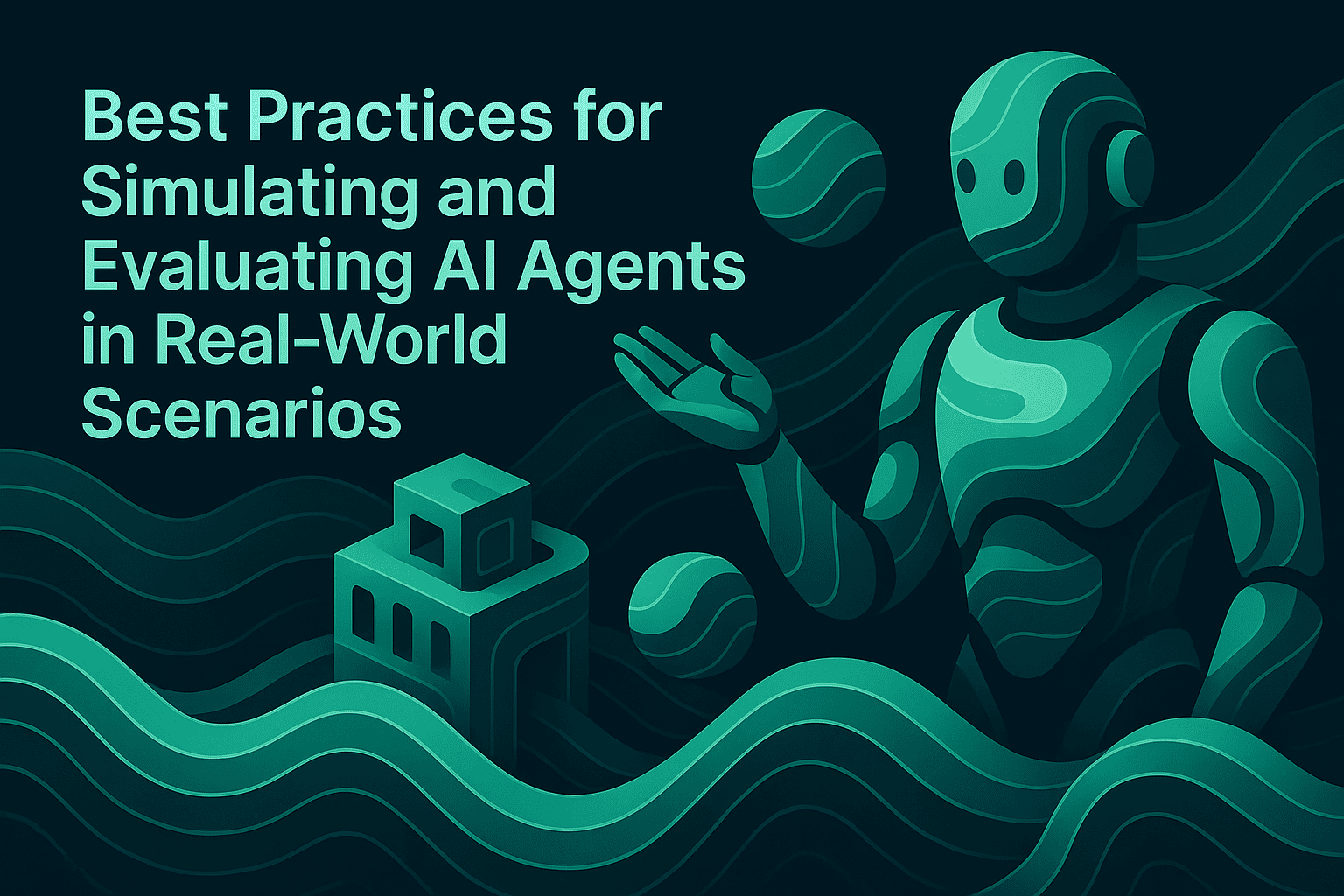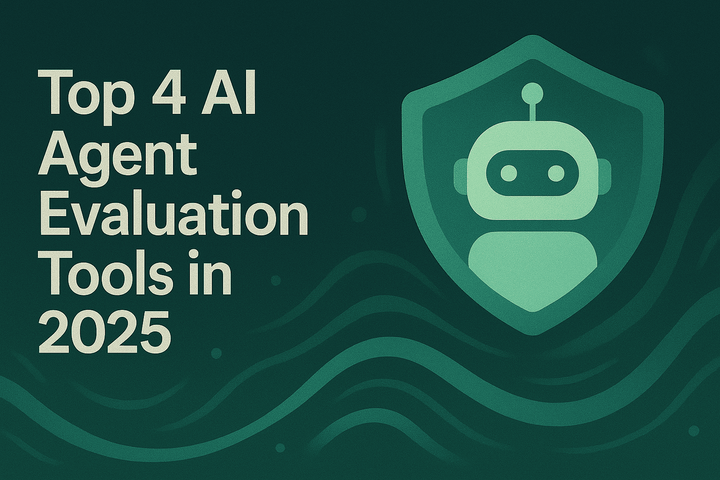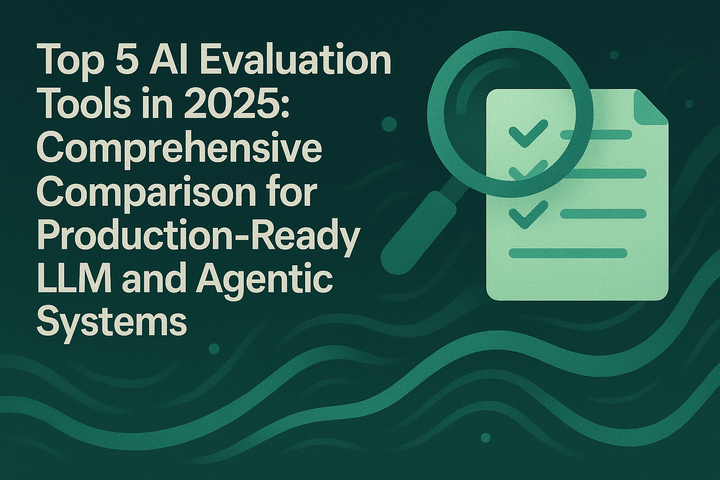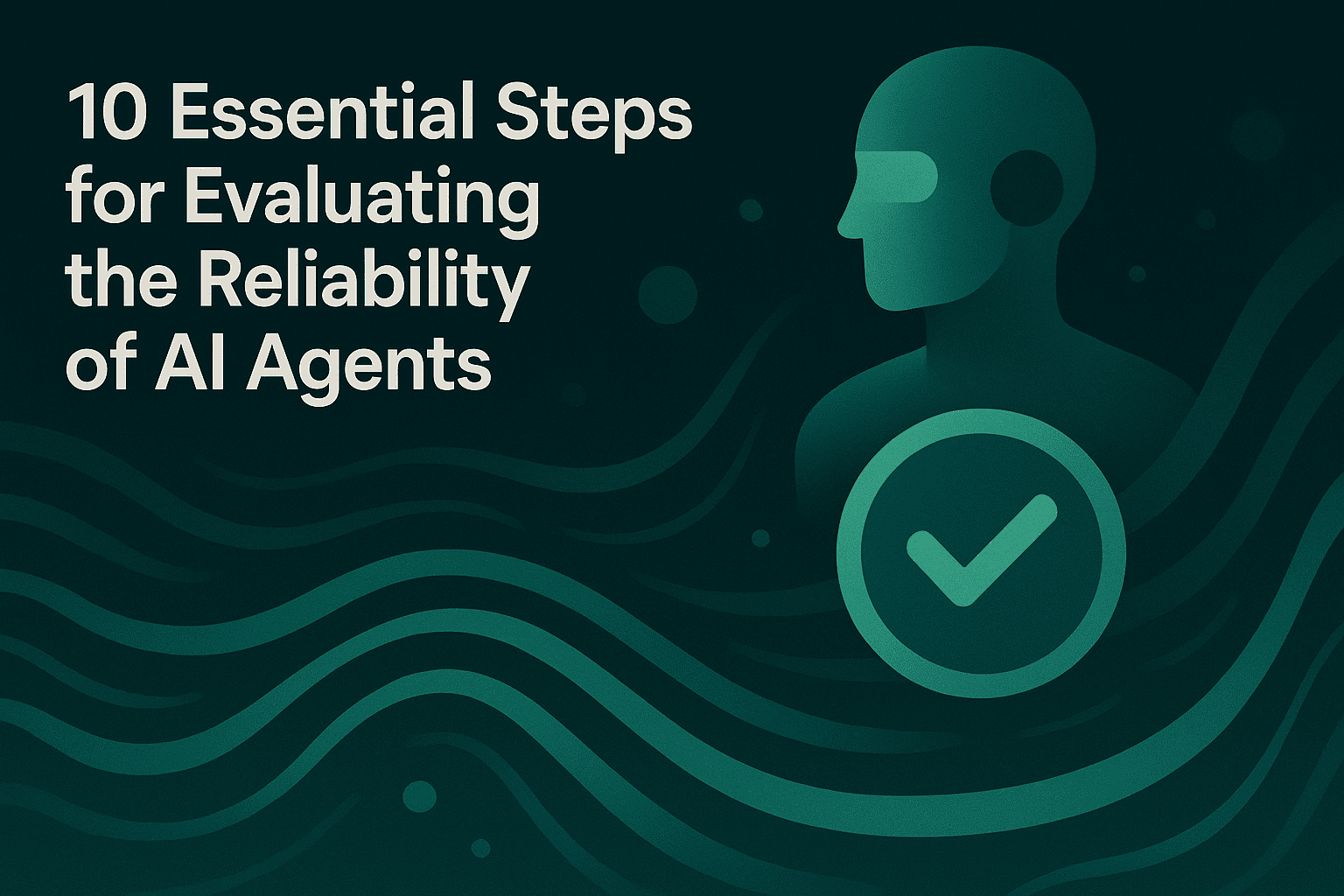Best Practices for Simulating and Evaluating AI Agents in Real-World Scenarios

TL;DR
Simulating and evaluating AI agents requires systematic testing across diverse scenarios, multi-dimensional metrics, and robust frameworks that combine automated evaluation with human oversight. Organizations must implement simulation environments to test agent behavior before deployment, establish clear success criteria across accuracy, efficiency, and safety dimensions, and integrate continuous monitoring into production workflows. The most effective approach combines pre-deployment simulation testing with real-time observability to ensure agents perform reliably in complex, multi-turn interactions while maintaining alignment with business objectives.
Why Agent Simulation and Evaluation Matter for Production Deployment
AI agents are fundamentally different from traditional software systems. Unlike deterministic applications that produce consistent outputs for identical inputs, agents operate across extended workflows, make autonomous tool selections, and generate probabilistic responses based on evolving context and memory states. This non-deterministic nature means traditional testing approaches fall short.
Deploying untested agents to production environments creates significant risks. Agents can hallucinate facts, misuse APIs, take unsafe actions, or experience context drift that propagates outdated information across conversations. As these systems increasingly handle sensitive tasks from customer service to financial operations, the cost of untested behaviors grows exponentially. Research indicates that current AI agents fail approximately 70% of assigned tasks, highlighting the critical need for rigorous evaluation frameworks.
Agent evaluation extends beyond simple output validation. Teams must assess the entire execution path of autonomous systems, including decision-making processes, tool usage patterns, reasoning quality, and the ability to maintain conversational coherence across multiple turns. This comprehensive approach ensures agents deliver reliable performance while adhering to safety constraints and compliance requirements.
Building Effective Simulation Environments for Multi-Turn Conversations
Simulation testing has emerged as the gold standard for evaluating agent behavior in controlled yet realistic environments. Rather than relying on static input-output testing, simulation enables teams to test agents across hundreds of scenarios and diverse user personas, monitoring how agents respond at every step of customer interactions.
Effective simulation environments require three core components. First, teams must generate diverse user personas that capture variations in age, technical proficiency, communication styles, and domain expertise. These personas enable comprehensive coverage of edge cases that might only emerge with specific user types. Second, simulation frameworks should support multi-turn conversations that replicate realistic back-and-forth exchanges rather than single-query interactions. Third, environments must provide detailed logging and tracing capabilities to capture step-by-step agent behavior for debugging and analysis.
Maxim's simulation platform allows teams to simulate customer interactions across real-world scenarios and user personas, monitoring how agents respond at every step. Teams can evaluate agents at a conversational level, analyzing the trajectory agents choose, assessing task completion success, and identifying failure points. The platform supports re-running simulations from any step to reproduce issues, identify root causes, and apply learnings to improve agent performance.
When designing simulation scenarios, teams should prioritize variety over volume in initial iterations. Start with core happy-path interactions, then systematically expand to include edge cases such as ambiguous inputs, multi-intent requests, context switches, and error recovery situations. Simulation scenarios should test not just what agents accomplish but how they handle unexpected developments, rule-following requirements, and long-term planning across extended conversations.
Establishing Comprehensive Evaluation Frameworks Across Multiple Dimensions
Effective agent evaluation requires multi-dimensional assessment that balances technical performance with business objectives. Organizations cannot optimize for single metrics without creating blind spots that compromise overall system reliability.
Task completion and accuracy form the foundation of agent evaluation. Agents must accomplish designated objectives with appropriate tool selection and correct parameter usage. However, accuracy alone provides an incomplete picture. Teams must also measure response time and latency, which directly impact user experience. Resource utilization metrics reveal efficiency and infrastructure impact, helping organizations optimize compute costs and API usage patterns.
Quality dimensions extend beyond functional correctness. Evaluation frameworks should assess reasoning quality, examining the logic and efficiency of decision-making pathways. Context retention measures how well agents maintain consistent understanding across conversations, while failure recovery evaluates how gracefully systems handle errors or unexpected inputs. Safety and compliance metrics ensure agents adhere to ethical guidelines, regulatory requirements, and organizational policies.
According to research on agent evaluation best practices, teams should implement evaluation at multiple levels of granularity. Unit testing validates individual components like prompt templates, retrieval functions, or tool integrations. Integration testing ensures modules communicate correctly and data flows smoothly between components. End-to-end evaluation replicates complete user sessions to identify emergent issues like repeated API calls or contradictory sub-task planning.
Maxim provides a unified framework for machine and human evaluations, enabling teams to quantify improvements or regressions with confidence. Teams can access off-the-shelf evaluators through the evaluator store or create custom evaluators suited to specific application needs. The platform supports measuring quality using AI-powered, programmatic, or statistical evaluators, with visualization capabilities for evaluation runs across multiple versions of prompts or workflows.
Implementing Automated and Human-in-the-Loop Evaluation Workflows
Balancing automation with human oversight represents one of the most critical decisions in agent evaluation strategy. While automated evaluations enable scale and continuous monitoring, human reviewers remain indispensable for identifying subtle issues that automated checks might miss.
Automated evaluation should handle high-volume, repeatable assessments. LLM-as-a-judge techniques provide nuanced scoring for dimensions like helpfulness, coherence, and tone. Deterministic evaluators check rule compliance, format adherence, and policy constraints. Statistical evaluators identify performance regressions by comparing current outputs against established baselines. Organizations should aim for approximately 80% automated evaluation complemented by 20% expert review, maintaining scalability while preserving judgment and accountability.
Human-in-the-loop evaluation becomes essential for last-mile quality checks and nuanced assessments that require domain expertise. Human reviewers excel at identifying tone mismatches, misleading phrasing, ethical oversights, and context-specific appropriateness that automated systems struggle to assess reliably. Research on AI evaluation metrics emphasizes that periodic manual inspection helps teams detect shifts early and keep agents aligned with user needs and business goals as conditions evolve.
Maxim enables teams to incorporate human reviewers at any step of the evaluation pipeline, validating nuanced criteria like helpfulness, tone, or domain-specific accuracy. The platform supports defining and conducting human evaluations for quality dimensions where automated metrics fall short, particularly important for regulated industries where compliance and reputational risk demand human judgment.
Teams should integrate evaluation into CI/CD pipelines to catch regressions before changes reach production. Maxim's platform allows automating evaluations via CI/CD pipeline using Python SDKs or REST APIs. Teams can trigger test runs after each deployment, auto-generate reports, and prevent quality degradation across iterations, ensuring reliability throughout the development lifecycle.
Curating High-Quality Datasets for Ongoing Agent Improvement
Dataset quality directly determines evaluation effectiveness. Teams that test with homogeneous, idealized examples create dangerous illusions of reliability. Real-world deployments expose agents to ambiguous language, changing user intents, and edge cases that sanitized test sets fail to capture.
Effective dataset curation requires multiple data sources. Start by collecting actual user interactions from similar systems, capturing authentic patterns in how people phrase requests, switch topics mid-conversation, or recover from misunderstandings. Augment real data with synthetic examples designed to challenge agent capabilities, ensuring coverage of edge cases unlikely to appear naturally in early deployment phases.
Datasets should evolve continuously alongside agent development. As agents encounter novel scenarios in production, those interactions should feed back into evaluation datasets. This closed-loop approach ensures evaluations remain relevant to actual usage patterns rather than becoming stale representations of initial assumptions about user behavior.
Maxim's data curation capabilities help teams combine synthetic prompts, real user logs, and annotation workflows to create high-quality datasets. These datasets evolve alongside agents, ensuring evaluations reflect actual user needs and edge-case behavior over time. Teams can curate data from production environments and build golden datasets for human annotation, establishing benchmarks that guide continuous improvement efforts.
For regulated industries or high-stakes applications, golden datasets that undergo expert review provide critical benchmarks for measuring quality improvements. These curated collections establish ground truth against which automated evaluations can be calibrated, ensuring alignment between automated metrics and actual business requirements.
Deploying Production Observability for Real-Time Agent Monitoring
Pre-deployment simulation and evaluation establish agent readiness, but production monitoring ensures sustained reliability as agents encounter real users and evolving contexts. Agent observability provides visibility into decision-making, model outputs, and performance at every step of live interactions.
Effective observability requires distributed tracing that spans across traditional infrastructure and LLM-specific elements like prompts, responses, tool usage, and context injection. Teams must visualize trace timelines, step through interactions, and debug issues from individual spans down to token-level behavior. This granularity enables rapid identification of failure modes, whether stemming from incorrect tool selection, context window limitations, or unexpected model responses.
Maxim's observability suite empowers teams to monitor real-time production logs and run periodic quality checks to ensure reliability. The platform provides deep, distributed tracing with visual trace timelines that enable debugging from individual spans to token-level behavior. Teams can track, debug, and resolve live quality issues with real-time alerts routed to Slack, PagerDuty, or custom webhooks, minimizing user impact.
Online evaluators continuously assess real-world agent interactions in production. Rather than waiting for batch test runs, teams can evaluate sessions or spans using automated metrics like faithfulness, toxicity, helpfulness, or custom criteria. These continuous assessments help identify drift or emerging quality issues as they develop, enabling proactive intervention before problems scale.
Production data also serves as a valuable source for ongoing improvement. Teams can curate datasets from production logs, identifying patterns in user requests, edge cases that cause failures, and opportunities for capability expansion. This feedback loop transforms production deployments into continuous learning environments that strengthen agent performance over time.
Integrating Evaluation-Driven Development into AI Engineering Workflows
Evaluation-driven development represents a fundamental shift in how organizations build AI systems. Rather than treating evaluation as a final checkpoint before launch, teams embed quality assessment throughout the entire development lifecycle.
This approach begins with defining clear success criteria before implementation starts. What specific goals should the agent achieve? Which metrics indicate acceptable performance? How will the system handle known failure modes? Establishing these targets enables focused development and prevents scope drift that leaves critical capabilities untested.
During development, teams should implement rapid iteration cycles that combine coding with immediate evaluation. Rather than building extensive functionality before testing, developers should validate agent behavior after each incremental change. This tight feedback loop identifies issues when they are easiest to address, reducing the compound complexity that emerges when multiple unvalidated changes interact unpredictably.
Organizations that adopt evaluation-driven development ship AI applications more than 5x faster while maintaining higher quality standards. By treating evaluation as a first-class activity throughout development rather than an afterthought, teams catch regressions early, build confidence in agent behavior, and accelerate deployment timelines.
Teams should also establish clear regression testing protocols. As agents evolve, each new version should be evaluated against previous baselines to ensure improvements in one area don't degrade performance elsewhere. Automated regression testing integrated into deployment pipelines prevents quality deterioration and maintains stability across releases.
Conclusion
Simulating and evaluating AI agents in real-world scenarios requires systematic approaches that balance comprehensive testing with operational efficiency. Organizations must implement simulation environments that test multi-turn conversations across diverse scenarios, establish multi-dimensional evaluation frameworks that assess accuracy alongside efficiency and safety, and integrate continuous monitoring into production workflows.
The most effective strategies combine automated evaluation at scale with selective human review for nuanced assessment. Teams should curate high-quality datasets that evolve with agent capabilities, ensuring evaluations remain relevant to actual usage patterns. Production observability completes the feedback loop, enabling continuous improvement based on real-world performance data.
As AI agents take on increasingly autonomous roles in mission-critical workflows, evaluation cannot remain an afterthought. Organizations that embed evaluation-driven development throughout the AI lifecycle build more reliable systems, deploy with greater confidence, and iterate faster than competitors relying on manual testing approaches.
Maxim provides an end-to-end platform for AI simulation, evaluation, and observability, helping teams ship reliable AI agents faster. From pre-deployment simulation testing to real-time production monitoring, Maxim enables organizations to measure and improve AI quality systematically across the complete agent lifecycle.
Ready to implement best practices for agent simulation and evaluation? Book a demo to see how Maxim can help your team ship production-ready AI agents with confidence.


